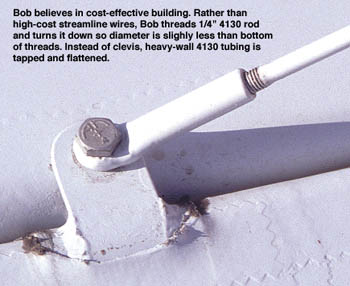It's just the links according to plans with some 7/16x.120 tubing welded into place. It's easy to make and super strong. It's pretty much .120 all the way around so I think a AN665 would certainly be lighter, but a bit more expansive and possibly more draggy, hard to say. I'll probably use an AN665 on one end and MS20667-5 on the other since it will look a bit nicer, and I can build the wires with 1x9 cable for about $200.
Hope that helps.
Hope that helps.




Comment